While there are certain benefits to growing plants in containers, this approach to gardening comes with some additional chores as well. One of the most crucial aspects of container gardening is knowing when container plants should be repotted. This article will answer that question and give you a few tips on how to perform repotting.
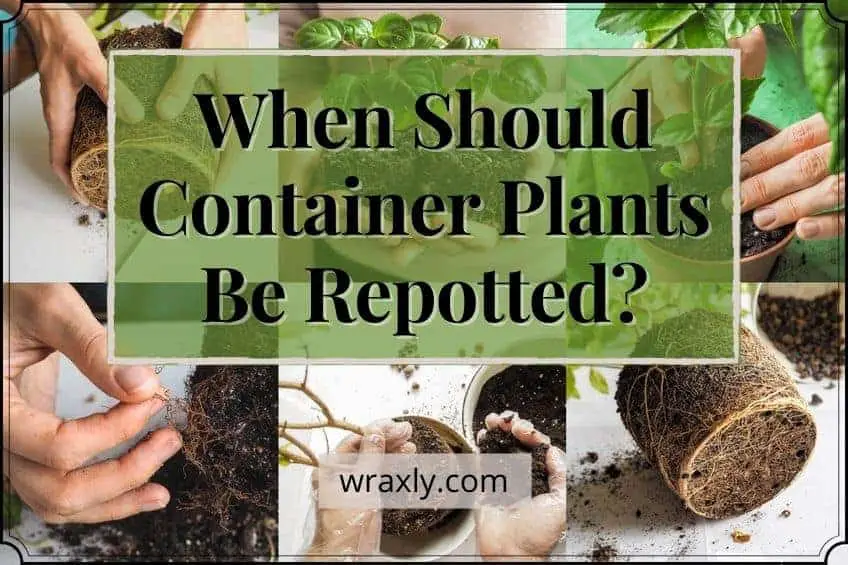
When to Repot a Container Plant
Knowing the ideal moment to repot your container plants requires experience and a watchful eye. We’ve identified three distinct times that you should repot your plants to give you some guidance:
- A few days after getting a new plant
- Once every year or two
- Anytime a plant shows signs of being rootbound
The next sections will elaborate on these three instances in which repotting is necessary. After, we’ll introduce the steps you need to take to complete the process and reveal answers to a few of the most common repotting questions that beginner gardeners have.
Repotting a Newly Purchased Container Plant
Most of the new plants you purchase will be growing in a container already. However, the containers that come with your new plants are rarely attractive, and likely won’t perform as well as the higher-quality containers you can buy individually. As such, you’ll want to repot your new plant in a container of your choosing.
However, before you repot a new plant, you should give it time to adapt to its new growing location. Allow your plant a few days to acclimate to its new environment. During that time, the shock of repotting may be more than your plant can handle.
After waiting a few days, evaluate your plant to see how well it has adapted to its new home. If it appears healthy, you can transfer your plant to a better garden container.
Setting a Regular Schedule
Your existing container plants will need repotting occasionally. As they grow, your plants will not only put forth more stems and foliage but also enlarge their root systems. Ideally, you should not allow your plant’s roots to grow so large that their container can no longer provide space for additional expansion. The best way to circumvent that outcome is to create a regular repotting schedule.
You may also like… Growing Plants in Glass Pots
Some plants grow faster than others, but it is safe to assume that most of your plants will need to be repotted about once per year or two. If you fail to check your plants for repotting after two years, you risk allowing your plants to become rootbound.
Dealing with a rootbound plant is more difficult than repotting one that is not rootbound. A regular repotting schedule is a wise preventative measure against root binding that can help keep your plants healthy while they continue to develop new growth.
Repotting Container Plants that Have Become Rootbound
Repotting is perhaps most necessary when your container plants have become rootbound. To help you understand why this scenario is well worth avoiding, let’s cover the definition of a rootbound plant.
What is a Rootbound Plant?
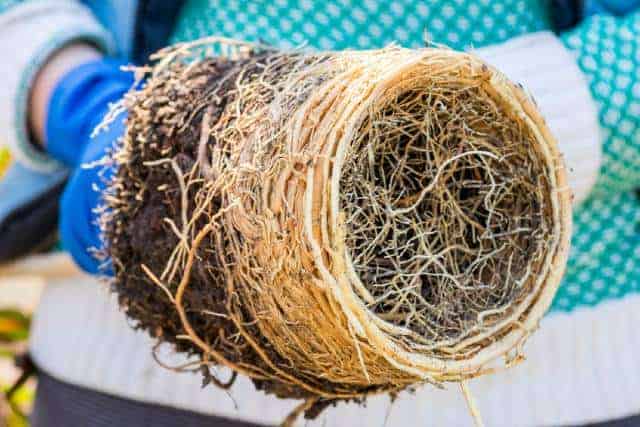
A rootbound plant is a plant that has outgrown its container. When a plant’s roots no longer have soil space in which to spread, they will begin forming dense, entangled masses. Those root masses often conform to the shape of the container’s edge.
A rootbound plant no longer has access to enough soil nutrients to support healthy future growth and will begin to decline. Root binding is incredibly detrimental to your plants, and you should avoid it as much as you can.
Any time your plants become rootbound, you will not only need to repot them but also root prune them. But considering root binding is not visible above the soil’s surface, it can be challenging to know when it occurs. Keeping a regular repotting schedule should prevent plants from becoming rootbound. But if you don’t have a set repotting schedule, you should at least know the signs of a rootbound plant.
Signs that a Plant is Rootbound
Preventing a plant from becoming rootbound is the ideal approach, but that may not always be possible. In those instances, here are the signs you should look for that indicate a plant has become rootbound:
- Roots growing out of drainage holes
- Foliage discoloration
- Diminished growth
- Weak growth habits
- Wilted or curled leaves
Some of the signs of a rootbound plant can be symptoms of other poor plant care habits. However, other signs are clearer. Mainly, if you see roots emerging from drainage holes, that is a sure sign that your plant no longer has space to expand within its container.
How to Repot a Container Plant
Now that you have an idea of when to repot a container plant, it’s time for you to learn how. Here are a few general steps you can take:
- Remove your plant from its current container
- Loosen the roots and soil
- Find a slightly larger container for your plant
- Add a layer of potting soil to the new container
- Place your plant in the new container
- Backfill with more potting soil
Repotting a plant is not often a strenuous or complex task and following the steps above should get the job done. But while we’ve already covered the specific indicators that it is time to repot a plant, you should know that there are distinct times of year that are better for repotting than others.
When is the Best Time of Year to Repot Container Plants?
The best time of year to repot a container plant is during spring. In spring, your plant is just beginning to enter its active growing season. Since your plant will be producing new growth, it will stand a better chance of responding positively to repotting.
Repotting in spring gives your plant plenty of time to react and adapt to its new container. However, it’s possible to repot plants during other seasons as well.
For example, if you grow houseplants or garden in a region that remains warm year-round, you’ll have much more flexibility when choosing a time to repot your plants. In those cases, you can repot your plants during nearly any month of the year without causing harm.
FAQs About Repotting Container Plants
Before we conclude this topic, let’s address some of the main concerns gardeners have about repotting. Below are answers to some of the most common questions related to repotting container plants.
Repotting is vital to your container plant’s longevity. While plants that grow in the ground may have access to a nearly unlimited supply of soil space for root expansion, the same is not true for container plants. A container plant will outgrow its pot eventually if you don’t repot it. When that occurs, the plant will no longer have access to sufficient soil nutrients, and its health and growth will diminish.
When you repot a plant, you can remove most of the old soil and replace it with new potting soil. It’s likely that your plant has already absorbed most of the available nutrients in its current soil mix. Once the soil has lost its essential nutrients, it is of far less value to your container plants. Consider repotting to be an opportunity to give your plant a new supply of nutrient-rich soil.
Breaking up the roots of a plant during repotting is not only ok to do, but it is also a beneficial practice. This is especially true if your plant has become rootbound. Roughing up the roots will encourage them to spread outward once they get into their new container, rather than entwining with one another. If you fail to loosen your plant’s roots, your repotting efforts will be far less effective.
Fertilization is generally beneficial when encouraging a plant to grow more vigorously. However, you won’t always need to fertilize a plant while repotting it. The potting soil you use to fill your container will have plenty of nutrients in it, making additional fertilization unnecessary. At times, adding fertilizer when repotting can be excessive and even detrimental to your plant’s growth.
A slight amount of wilting is a common response among repotted plants. But while this appearance can be concerning, it is not typically something you should worry about. When you transplant or repot a plant, it will undergo some amount of shock. Transplant shock is normal and does not indicate that your plant is doomed to fail. After a few weeks, your plant should overcome transplant shock and return to full health.
Final Thoughts on When Should Container Plants be Repotted
Repotting is a vital chore that starts with understanding when a container plant should be repotted. Use the insights in the article above to notice when your plants need a new container in which to live. Doing so will ensure that your plants exhibit healthy growth and get all the nutrients and moisture they need from the soil in their containers.

John Haryasz is a freelance writer and landscape designer. In the field of landscape architecture, he has contributed to many successful design projects throughout the country. As a writer, John specializes in creating captivating and informative web content. Through that work, he aims to share his design knowledge and promote engagement with the outdoor world.
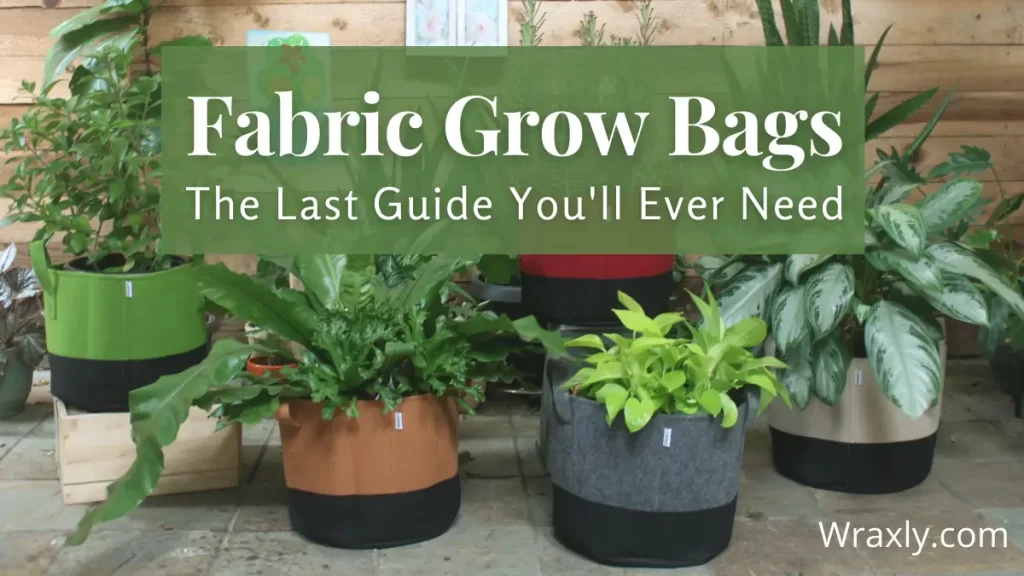
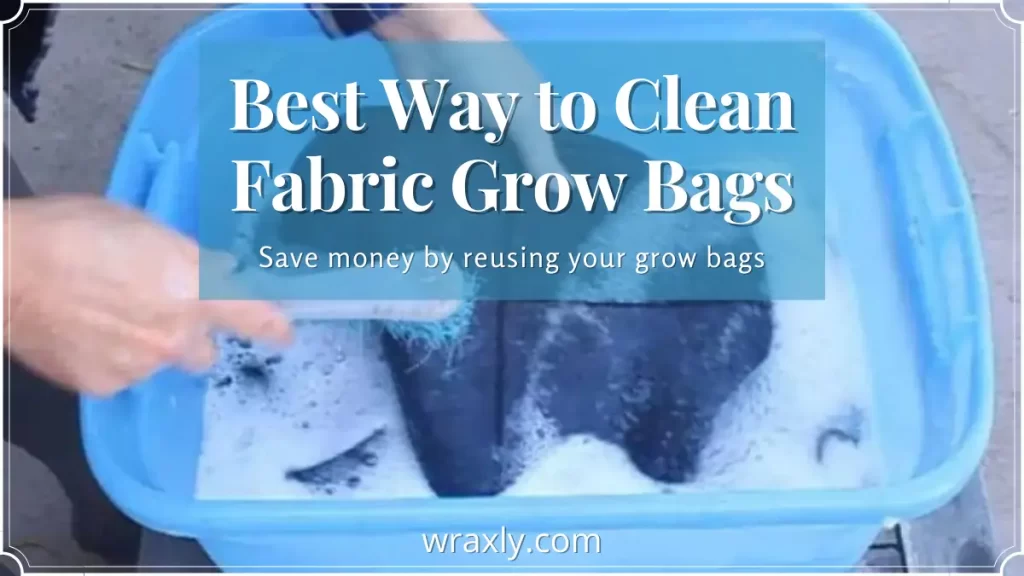
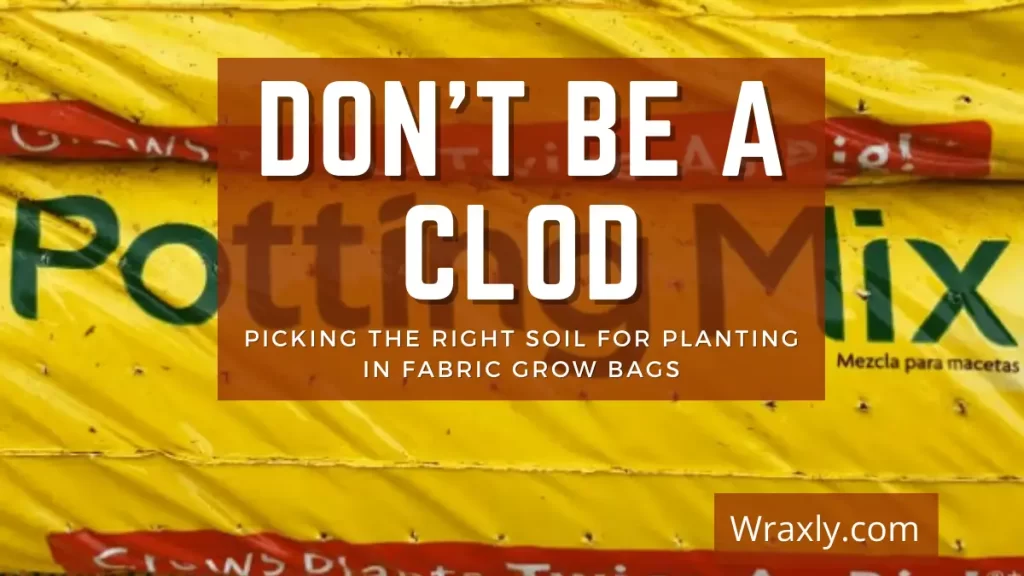
![Container gardening for beginners [Buying guide]](https://wraxly.com/wp-content/uploads/2021/02/Container-gardening-for-beginners-Buying-guide-1200-1024x576.webp)